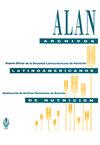肠道微生物群与脂肪组织调节肥胖发病机制
IF 0.3
4区 医学
Q4 NUTRITION & DIETETICS
引用次数: 0
摘要
上个世纪进行的与肠道微生物群(GM)描述有关的调查表明,其组成与宿主健康之间存在具体关系。其失调被称为肠道微生态失调,与不同类型的胃肠道、代谢、肿瘤学甚至精神疾病有关。在世界不同年龄组和地区的动物和人类模型中,许多描述肥胖失调状况的报告都很突出。反过来,微生物组的组成也与肥胖的不同合并症有关,假设MI对脂肪组织(AT)功能障碍有影响,并理解它对应于肥胖发病机制的主要调节因子。然而,还不可能建立一个合理的机械解释。目前,多组学技术的使用,加上生理变量的评估,可以让我们更好地理解所提出的问题。有鉴于此,本综述旨在综述在理解肠道微生物群对AT的影响及其对肥胖发病机制的贡献方面的最新进展。在确定的主要机制中,有证据表明GM的组成与炎症、肠道通透性和脂肪生成的调节之间存在生理联系。所涉及的途径来源于肠道微生态失调对短链脂肪酸、claudins、巨噬细胞、低聚糖等作用的影响。所涉及的机制主要在动物模型中进行研究,应在未来的人类纵向和实验研究中进行评估,以更好地了解每种机制在肥胖全球发病机制中的意义。本文章由计算机程序翻译,如有差异,请以英文原文为准。
Microbiota intestinal y modulación del tejido adiposo en la patogénesis de la obesidad
The investigations carried out during the last century related to the description of the Gut Microbiota (GM) suggest a concrete relationship between its composition and the health of the host. Its deregulation called intestinal dysbiosis has been associated with different types of gastrointestinal, metabolic, oncological and even psychiatric diseases. Numerous reports that have described the condition of dysbiosis in obesity stand out, both in animal and human models of different age groups and regions of the world. In turn, the composition of the microbiome has also been associated with the different comorbidities of obesity, postulating that MI has an influence on adipose tissue (AT) dysfunction, understanding that it corresponds to the main modulator of the pathogenesis of obesity. However, it is not yet possible to establish a plausible mechanistic explanation. Currently, the use of multi-omics technologies, together with the evaluation of physiological variables, could provide us with a better understanding of the question raised. In view of this, this review aims to review the latest advances in understanding the influence of the intestinal microbiota on AT and its contribution to the mechanisms related to the pathogenesis of obesity. Among the main mechanisms identified, the evidence reports physiological links between the composition of GM and the modulation of inflammation, intestinal permeability and adipogenesis. The pathways involved derive from the influence of intestinal dysbiosis on the action of short-chain fatty acids, claudins, macrophages, oligosaccharides, among others. The mechanisms involved, mainly studied in animal models, should be considered for evaluation in future longitudinal and experimental studies in humans in order to obtain a better understanding of the implication of each mechanism in the global pathogenesis of obesity.
求助全文
通过发布文献求助,成功后即可免费获取论文全文。
去求助
来源期刊
CiteScore
0.50
自引率
0.00%
发文量
31
期刊介绍:
Archivos Latinoamericanos de Nutrición (ALAN) is the official publication of the Sociedad Latinoamericana de Nutición (SLAN), for the dissemination of knowledge in the fields of food and nutrition, principally throughout the American Hemisphere. Articles in Spanish, English, Portuguese and French are accepted, both from the Society members and from nonmembers, in the following categories: 1. General articles (critical scientific reviews); 2. Research articles (originals); 3. Papers in applied nutrition (analytical results from intervention programs and discussion of reconmendations of practical application), and 4. Letters to Editor (short comments of general interest or about scientific facts and results previously published in Archives).

 求助内容:
求助内容: 应助结果提醒方式:
应助结果提醒方式:


